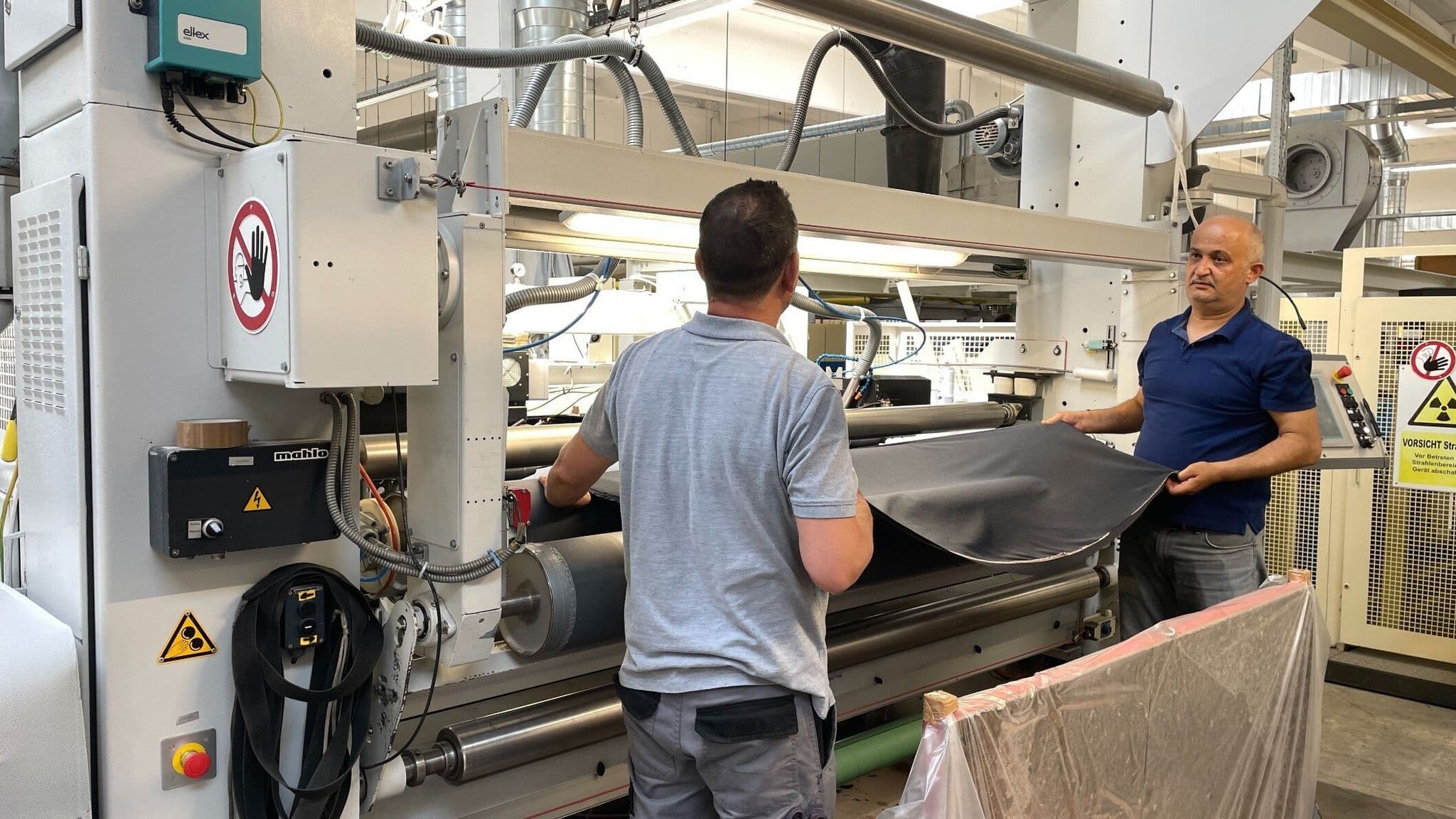Key Points
- Wax + biopolymer system: polymerisation in the stenter locks wax into fibres, combining strong water repellency with laundry/wear durability.
- Single pass, ~15 minutes: dyeing and DWR at room temperature on standard pad–stenter lines; no new equipment required.
- Zero effluent dyeing: dyes dissolve in biocomponents and are fixed during polymerisation, meeting colourfastness/crocking specs without rinses.
- Tough substrates: penetrates Ventile cotton; aramids dyed via polymer lock-in; no cross-linking glues, deep yarn-level bonding.
- Scale-up path: shipped as concentrate via toll manufacturers; simple three-step tech transfer; add-ons include odour control, UV, and membrane waterproofing.
Full interview with Emerald Finishing
1. Your DWR finish is both biodegradable and high-performing. Can you describe how the molecular structure of your Bio Polymers contributes to water repellency without relying on fluorocarbons or silicones?
The Emerald Finishing technology uses natural biopolymers, and waxes, for its water-repellency attribute. Waxes alone have good water repellency but are not durable. They easily wash or wear off. BioPolymers, like synthetic polymers, offer excellent durability but limited water repellency. We combine both to achieve exceptional water repellency with unmatched laundry and wear durability.
Additionally, waxes, known to be chemically inert, dissolve in the unpolymerized biocomponents. When the biocomponent polymerizes in the stenter, it locks in the wax, granting the finish water repellency and durability unmatched by other products.
2. What technical barriers had to be addressed in enabling a fully continuous dye + DWR process that works at room temperature and completes within 15 minutes?
Apparel companies have strict product specifications: colorfastness, crocking resistance, color saturation, and brightness. We aimed to use commercially-available dyestuff across fabrics like cotton, polyester, and nylon. The traditional approach dictated separate dye baths.
But we found that dyestuff from reputable manufacturers dissolves within our DWR chemistry, penetrating both dye and DWR into the yarn simultaneously. The result is a combined dye + DWR finish that meets apparel specs in a single, rapid step.
3. You’ve specified that your Bio Polymer system requires no new equipment for mills. How did you formulate the chemistry to ensure compatibility with existing finishing lines, especially stenter-based curing?
Our finishing chemistry is a stable oil-in-water emulsion, which is padded onto fabric and cured in the stenter. The water evaporates, and the oil polymerizes, anchoring into the yarn. Unlike gravure-coating, our method works seamlessly with existing mill infrastructure.
4. Given that your dyeing method generates zero effluent, how do you manage pigment fixation and colourfastness without traditional rinsing or post-treatment steps?
Dyes penetrate the yarn by dissolving in our biocomponents, similar to how oil stains embed deeply into fabrics. The subsequent polymerization locks in the dye, enhancing laundry durability and colorfastness, with no rinsing requ
5. Can you walk us through the specific advantages your Bio Polymers offer when applied to fabrics like Ventile cotton or aramids compared to conventional DWR technologies?
Ventile cotton is tightly woven and hard to treat. But our water-in-oil emulsion penetrates better than water alone, enhancing both dyeing and water repellency. For aramids, which resist dyeing, we lock the dye through polymerization and waxes. This is a major leap in adhesion technology.
6. Many sustainable chemistries struggle with adhesion or lamination. How does your Bio Polymer approach solve this, especially in multilayer performance textiles?
Traditional finishing often relies on glues ("cross-linking"). We avoid that entirely. Instead, we use genuine polymerization, allowing deep yarn-level penetration and heat-induced bonding. The result is a durable film that doesn’t just coat. It integrates into the fabric.

7. Your technology supports both dyeing and finishing for a wide range of fiber types. What modifications, if any, are needed to accommodate fiber-specific behavior such as hydrophilicity or shrinkage?
If hydrophilicity is needed, we add chemistry to override the hydrophobic base. Meanwhile, fabric shrinkage is naturally reduced due to our polymerization process and the DWR finish.
8. You mention stenter-based curing as the only energy-intensive step. What are the energy efficiency benefits compared to conventional vat dyeing or autoclave finishing?
Continuous processes, like ours, are inherently more energy-efficient than batch systems. Traditional vat dyeing requires wet-on-wet processing and post-drying. Our combined dye + DWR finish eliminates that. It reduces both drying time and energy use, with zero effluent.
9. What sort of partnerships or licensing structures have you found most effective in accelerating industry adoption, particularly among mills hesitant to adopt new green tech?
We partner via chemical toll manufacturers globally and ship as a concentrate to reduce costs. We also collaborate with commission finishers who offer low-barrier pilot testing for mills.
10. From a manufacturing perspective, what kind of training or operational support do you provide to mills transitioning to this low-barrier Bio Polymer finishing method?
Our tech transfer has three simple steps.
- We finish and send sample fabrics.
- If satisfied, the mill gets a chemistry sample and usage guide.
- We offer onsite support (often not needed). It's easy to adopt and similar to current processes.
11. How do you envision scaling this technology for niche sectors like protective workwear or high-performance sportswear, where chemical resistance and durability are key?
Protective workwear benefits from our finish's laundry durability and fabric-preserving waxes, which survive commercial laundering. High-performance sportswear gains from the permanence of our finish on synthetics. We can also add odor control (terpenes) and UV resistance (zinc oxide), even full membrane waterproofing.








